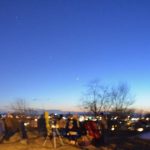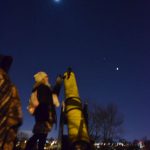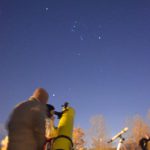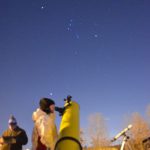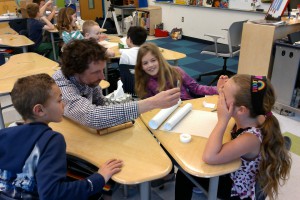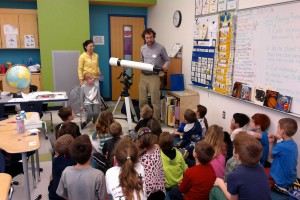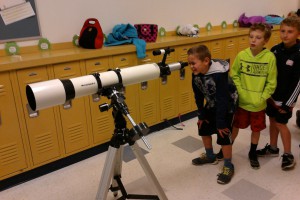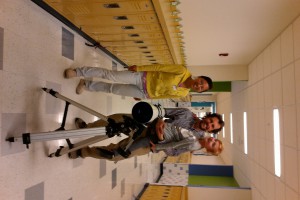We helped the Robinson Middle School team up with the brand new UMass Lowell astronomy Club for a star party last month. Christian Hill Reservoir overlooking Lowell was the location, high , clear, and cloud free, and a LOT of telescopes.
- Robinson Stars Feb2017
Venus, showing a spectacular crescent phase was the star of the night, appearing alongside the (also) crescent moon. Distant galaxies, color contrating double stars and the enigmatic “Double-Double” multiple star system Epsilon Lyrae, joined the familial shapes of Orion and Cassiopaeia.
William Clockedille, president of the new club brought half a dozen of the club members (some of whom have some serious optics), including Paul Courtemanche – telescope maker extraordinaire – who brought a double-barreled 8-inch binocular scope and a long-focus newtonian planetary scope both prize winning instruments in the high-fidelity world of amateur telescope making
Robinson Teachers including Mr Bishop and Ms Sanborn brought hot chocolate, and a high degree of enthusiasm to the freezing night.
We hope to do much more of this as the heath worms up!

